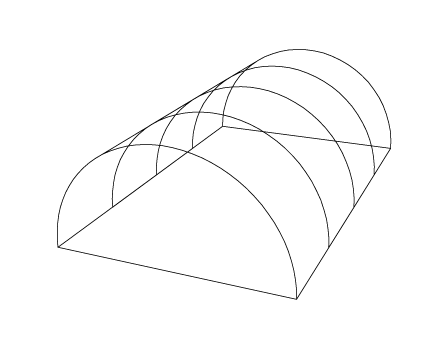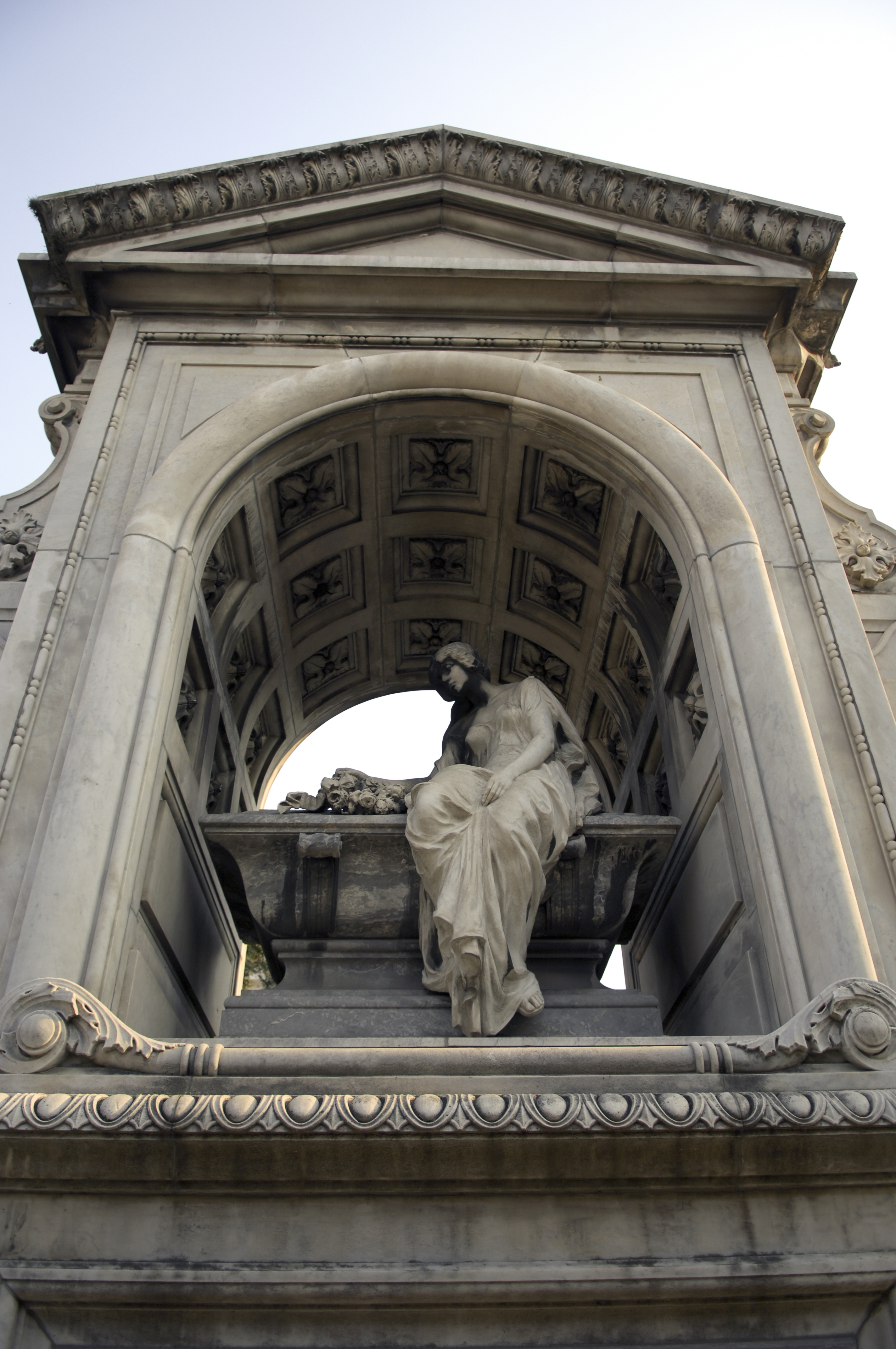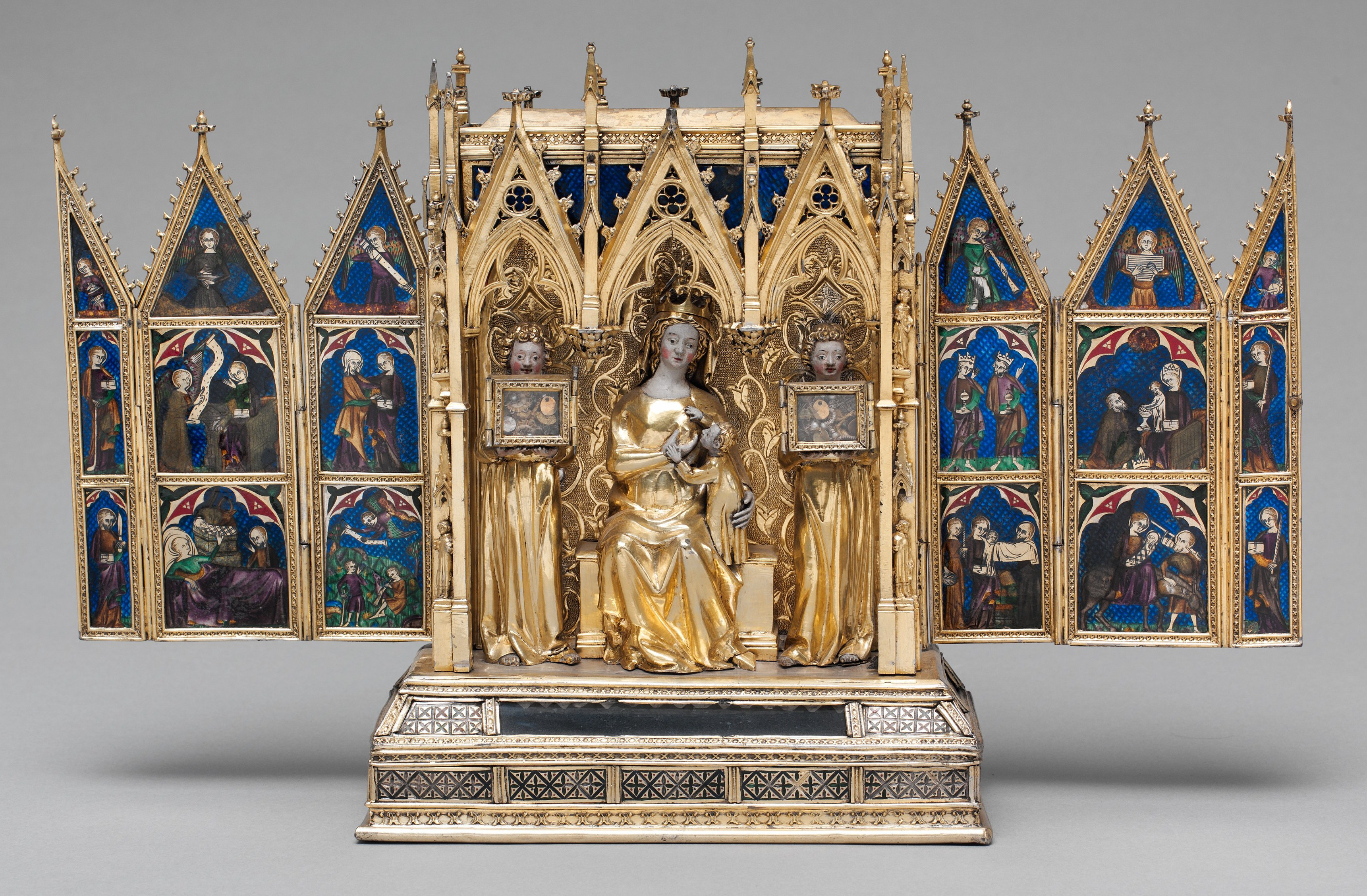|
Aparank Monastery
Aparank Monastery or Aparanq (), or Holy Cross Aparank, is an Armenian monastery located in modern-day Turkey, Van province near the city of Bahçesaray (District), Van, Bahçesaray. It was found within the borders of the historical Historical regions of Armenia, Armenian province of Moxoene, Mokk. The monastery was founded in the 10th century to house a relic of the True Cross. The church was restored and expanded in the 17th century, and it was abandoned during the first half of the 20th century after the Armenian genocide. Before the genocide, it consisted of the churches of Surb Hovhannes Karapet (St. John the Baptist), Surb Astvatsatsin (Holy Mother of God), and the chapels of Surb Stepannos (St. Stephen) and Surb Arakelots (Holy Apostles), a gavit, a fountain, and a hotel. Location The monastery is located on the Aparank Armenian plateau and is above sea level on the southwest side of Vankin Dağ (Sarikhats). It lies northwest of the town of Aparank (Veras in Kurdish) and ... [...More Info...] [...Related Items...] OR: [Wikipedia] [Google] [Baidu] |
Armenian Apostolic Church
The Armenian Apostolic Church () is the Autocephaly, autocephalous national church of Armenia. Part of Oriental Orthodoxy, it is one of the most ancient Christianity, Christian churches. The Armenian Apostolic Church, like the Armenian Catholic Church, belongs to the Armenian Rite. The Kingdom of Armenia (antiquity), Kingdom of Armenia was the first state in history to adopt Christianity as its official religion (under the Armenian Apostolic traditions) during the rule of Tiridates III of Armenia, King Tiridates III, of the Arsacid dynasty of Armenia, Arsacid dynasty in the early 4th century. According to tradition, the church originated in the missions of Apostles Bartholomew the Apostle, Bartholomew and Jude the Apostle, Thaddeus (Jude) in the 1st century. St. Gregory the Illuminator was the first official primate (bishop), primate of the church. It is sometimes referred to as the Armenian Apostolic Orthodox Church, Armenian Church or Armenian Gregorian Church. The Armenian Ap ... [...More Info...] [...Related Items...] OR: [Wikipedia] [Google] [Baidu] |
Vaspurakan
Vaspurakan (, Western Armenian pronunciation: ''Vasbouragan'') was the eighth province of the ancient kingdom of Armenia, which later became an independent kingdom during the Middle Ages, centered on Lake Van. Located in what is now southeastern Turkey and northwestern Iran, the region is considered to be the cradle of Armenian civilization. Name The name Vaspurakan is of Iranian origin. It is related of the Middle Persian word ''vāspuhr'', meaning "senior, heir, prince". In Middle Persian, ''vāspuhrakān'' referred to the top nobility of the Sasanian Empire. In Armenian, ''vaspurakan'' was also rarely used as an adjective meaning "noble"; for example, ''vaspurakan gund'' ("army/troop of nobles"). Thus, Vaspurakan can be translated as "noble land" or "land of princes". Alternative interpretations of the name include "having a special position" or "royal domain". Armenologist Heinrich Hübschmann considered it likely that the name originated as a shortening of the ''koghmn V ... [...More Info...] [...Related Items...] OR: [Wikipedia] [Google] [Baidu] |
Former Churches In Turkey
A former is an object, such as a template, gauge or cutting die, which is used to form something such as a boat's hull. Typically, a former gives shape to a structure that may have complex curvature. A former may become an integral part of the finished structure, as in an aircraft fuselage, or it may be removable, being used in the construction process and then discarded or re-used. Aircraft formers Formers are used in the construction of aircraft fuselage, of which a typical fuselage has a series from the nose cone to the empennage, typically perpendicular to the longitudinal axis of the aircraft. The primary purpose of formers is to establish the shape of the fuselage and reduce the column length of stringers to prevent instability. Formers are typically attached to longerons, which support the skin of the aircraft. The "former-and-longeron" technique (also called stations and stringers) was adopted from boat construction, and was typical of light aircraft built until th ... [...More Info...] [...Related Items...] OR: [Wikipedia] [Google] [Baidu] |
Armenian Churches In Turkey
There are hundreds of Armenian churches in Turkey, the majority of which are either in ruins or are being used for other purposes. Armenian churches still in active use belonging to various denominations, mainly Armenian Apostolic Church, Armenian Apostolic, but also Armenian Catholic Church, Armenian Catholic and Armenian Evangelical Church, Armenian Evangelical Protestant. Armenian Apostolic Churches Old İstanbul European side of İstanbul Anatolian side of İstanbul Prince Islands Anatolia Armenian Catholic Churches Armenian Evangelical Churches References {{DEFAULTSORT:Armenian churches in Turkey Armenian churches in Turkey, Lists of Armenian churches, Turkey Lists of religious buildings and structures in Turkey Oriental Orthodoxy-related lists Eastern Catholicism-related lists ... [...More Info...] [...Related Items...] OR: [Wikipedia] [Google] [Baidu] |
Buildings And Structures In Van Province
A building or edifice is an enclosed structure with a roof, walls and windows, usually standing permanently in one place, such as a house or factory. Buildings come in a variety of sizes, shapes, and functions, and have been adapted throughout history for numerous factors, from building materials available, to weather conditions, land prices, ground conditions, specific uses, prestige, and aesthetic reasons. To better understand the concept, see ''Nonbuilding structure'' for contrast. Buildings serve several societal needs – occupancy, primarily as shelter from weather, security, living space, privacy, to store belongings, and to comfortably live and work. A building as a shelter represents a physical separation of the human habitat (a place of comfort and safety) from the ''outside'' (a place that may be harsh and harmful at times). buildings have been objects or canvasses of much artistic expression. In recent years, interest in sustainable planning and building practi ... [...More Info...] [...Related Items...] OR: [Wikipedia] [Google] [Baidu] |
Stalactite
A stalactite (, ; , ) is a mineral formation that hangs from the ceiling of caves, hot springs, or man-made structures such as bridges and mines. Any material that is soluble and that can be deposited as a colloid, or is in suspension (chemistry), suspension, or is capable of being melting, melted, may form a stalactite. Stalactites may be composed of lava, minerals, mud, peat, pitch (resin), pitch, sand, Geyserite, sinter, and amberat (crystallized urine of pack rats). A stalactite is not necessarily a speleothem, though speleothems are the most common form of stalactite because of the abundance of limestone caves. The corresponding formation on the floor of the cave is known as a stalagmite. Formation and type Limestone stalactites The most common stalactites are speleothems, which occur in limestone caves. They form through Deposition (geology), deposition of calcium carbonate and other minerals, which is precipitated from mineralized water Solution (chemistry), solutio ... [...More Info...] [...Related Items...] OR: [Wikipedia] [Google] [Baidu] |
Drum (architecture)
A tholobate (), also called a drum or tambour, is the upright part of a building on which a dome is raised. It is generally in the shape of a cylinder or a polygonal prism. The name derives from the tholos, the Greek term for a round building with a roof and a circular wall. Another architectural meaning of ''drum'' is a circular section of a column shaft. Examples In the earlier Byzantine church architecture the dome rested directly on the pendentives and the windows were pierced in the dome itself; in later examples, between the pendentive and the dome an intervening circular wall was built in which the windows were pierced. This is the type which was universally employed by the architects of the Renaissance, of whose works the best-known example is St. Peter's Basilica at Rome. Other examples of churches of this type are St Paul's Cathedral in London and the churches of the Les Invalides, the Val-de-Grâce, and the Sorbonne in Paris. There are also secular buildin ... [...More Info...] [...Related Items...] OR: [Wikipedia] [Google] [Baidu] |
Transverse Arch
In architecture, a transverse arch is an arch in a vaulted building that goes across the barrel vault. A series of transverse arches sitting on tops of the columns on the sides of the nave was typical in the churches of Romanesque architecture (common since Carolingian times). By analogy, the term is also used to describe the transverse ribs of a groined vault and for any crosswise arch in modern buildings. An arc that goes in transverse direction, but carries an exposed wall on top, dividing the vault into compartments, is called a diaphragm arch. In the historical buildings, the transverse arches provide support for purlins and roof ridge beams. They also subdivide the nave into bays. The springings of the arch are typically pinned to supports using wooden or steel ties, but the bulk of lateral thrust is terminated in the abutments. File:Kerkplattegrond gordelboog en travee.png, The transverse arches are highlighted in green on a plan of a church File:Voûte en berceau C ... [...More Info...] [...Related Items...] OR: [Wikipedia] [Google] [Baidu] |
Barrel Vault
A barrel vault, also known as a tunnel vault, wagon vault or wagonhead vault, is an architectural element formed by the extrusion of a single curve (or pair of curves, in the case of a pointed barrel vault) along a given distance. The curves are typically circular in shape, lending a semi-cylindrical appearance to the total design. The barrel vault is the simplest form of a vault: effectively a series of arches placed side by side (i.e., one after another). It is a form of barrel roof. As with all arch-based constructions, there is an outward thrust generated against the walls underneath a barrel vault. There are several mechanisms for absorbing this thrust. One is to make the walls exceedingly thick and strong – this is a primitive and sometimes unacceptable method. A more elegant method is to build two or more vaults parallel to each other; the forces of their outward thrusts will thus negate each other. This method was most often used in construction of churches, where sev ... [...More Info...] [...Related Items...] OR: [Wikipedia] [Google] [Baidu] |
Shale
Shale is a fine-grained, clastic sedimentary rock formed from mud that is a mix of flakes of Clay mineral, clay minerals (hydrous aluminium phyllosilicates, e.g., Kaolinite, kaolin, aluminium, Al2Silicon, Si2Oxygen, O5(hydroxide, OH)4) and tiny fragments (silt-sized particles) of other minerals, especially quartz and calcite.Blatt, Harvey and Robert J. Tracy (1996) ''Petrology: Igneous, Sedimentary and Metamorphic'', 2nd ed., Freeman, pp. 281–292 Shale is characterized by its tendency to split into thin layers (Lamination (geology), laminae) less than one centimeter in thickness. This property is called ''Fissility (geology), fissility''. Shale is the most common sedimentary rock. The term ''shale'' is sometimes applied more broadly, as essentially a synonym for mudrock, rather than in the narrower sense of clay-rich fissile mudrock. Texture Shale typically exhibits varying degrees of fissility. Because of the parallel orientation of clay mineral flakes in shale, it breaks in ... [...More Info...] [...Related Items...] OR: [Wikipedia] [Google] [Baidu] |
Staurotheke
A reliquary (also referred to as a ''shrine'', ''chasse'', or ''phylactery'') is a container for relics. A portable reliquary, or the room in which one is stored, may also be called a ''feretory''. Relics may be the purported or actual physical remains of saints, and may comprise bones, pieces of clothing, or some object associated with saints or with other religious figures. The authenticity of any given relic is often a matter of debate; for that reason, some churches require documentation of a relic's provenance. Relics have long been important to Buddhists, Christians, Hindus, and to followers of many other religions. These cultures often display reliquaries in shrines, churches, or temples to which the faithful make pilgrimages to gain blessings. The term is sometimes used in a looser sense to mean a container for the remains of any important figure, even non-religious ones. In particular, the kings of France often specified that their hearts and sometimes other organs ... [...More Info...] [...Related Items...] OR: [Wikipedia] [Google] [Baidu] |
Kurds
Kurds (), or the Kurdish people, are an Iranian peoples, Iranic ethnic group from West Asia. They are indigenous to Kurdistan, which is a geographic region spanning southeastern Turkey, northwestern Iran, northern Iraq, and northeastern Syria. Consisting of 30–45 million people, the global Kurdish population is largely concentrated in Kurdistan, but significant communities of the Kurdish diaspora exist in parts of West Asia beyond Kurdistan and in parts of Europe, most notably including: Turkey's Central Anatolian Kurds, as well as Kurds in Istanbul, Istanbul Kurds; Iran's Khorasani Kurds; the Caucasian Kurds, primarily in Kurds in Azerbaijan, Azerbaijan and Kurds in Armenia, Armenia; and the Kurdish populations in various European countries, namely Kurds in Germany, Germany, Kurds in France, France, Kurds in Sweden, Sweden, and the Kurds in the Netherlands, Netherlands. The Kurdish language, Kurdish languages and the Zaza–Gorani languages, both of which belong to the Wes ... [...More Info...] [...Related Items...] OR: [Wikipedia] [Google] [Baidu] |








